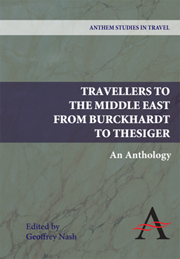Summary
In his introduction to Travel Writing in the Nineteenth Century, subtitled ‘Filling the Blanks Spaces’, Tim Youngs states that the motivation for travel in places like Africa and South America was to fill the blank spaces on the map and ‘once “discovered”, many of those places would be exploited for their commercial potential’; (Youngs 2006:2). To the imaginative draw of the blank spaces and the desire to exploit them economically should be added the urge to establish political control over them, directly or indirectly. The entire process is of course comprehended in the terms imperialism and colonization. Nineteenth century travel writing – especially in a region like the Middle East – is inextricably linked to the spread of European power, although that does not mean every traveller in this period set out on their journey with the express intention of building or adding to the British Empire. Nevertheless, the geographical and chronological divisions adopted in this volume largely conform to political realities. Britain's progressive entrenchment in India focalized the Middle East for her politicians. The Ottoman Empire, which comprised the lands known to European travellers as the Near East, included Egypt and the Holy Land as well as many of the sites of classical antiquity, but became as a result of Britain's imperial interests in India the nexus of her foreign policy.
- Type
- Chapter
- Information
- Travellers to the Middle EastAn Anthology, pp. xi - xxPublisher: Anthem PressPrint publication year: 2009

